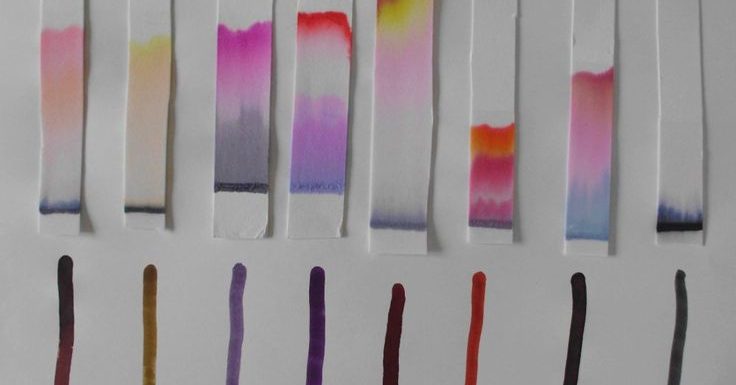
Paper chromatography is an analytical method applied to segregate colored chemicals or substances. In this, a small sample is placed on porous paper which is in contact with the solvent.
Because of capillary action, the solvent moves through the paper and dissolves the mixture spot. The constituents of the sample will commence to move along with the paper at the same rate as that of the solvent.
Constituents of the sample with a stronger attraction to the paper than to the solvent will move slowly when compared to the constituents with a strong attraction to the solvent. Because of the rate difference at which each component in the mixture travels along the paper leads to their separation.
The factors that influence the reproducibility of paper chromatography are types of extracted chemical compounds, type of paper materials used, time taken by the paper to for solvent runs and type of solvent used.
Also the solvent holding vessels, lids or covers utilized for the paper chromatography effects the consequences of chromatography as the above factors decide vaporization and humidification rates.
Uses of Paper Chromatography:
- Paper chromatography is used as an analytical chemistry technique for identifying and separating colored mixtures like pigments.
- It is a reasonably priced and rapid method which gives graphic and clear results.
- It is utilized as a qualitative method for recognizing the components in a mixture.
- It can be reproduced easily based on the conditions that are controlled and maintained.
- Sugars, amino acids, lipids and nucleic acids and other biomolecules can be simply recognized by spraying with apt reagents so as to detect these specific compounds.
- In forensic studies, it is utilized in crime scene investigation and DNA, RNA sequencing besides with other studies.
- It is employed in numerous scientific studies in recognition of unfamiliar organic and inorganic compounds from a mixture.
Types of Paper Chromatography:
Depending on the way, the development of chromatogram on paper is done in procedures. We’ve five types of chromatography:
- Ascending chromatography: As the name suggests, the chromatogram ascends. The development of paper happens because of the solvent movement.
The solvent reservoir is at the bottom of the beaker and the paper tip with sample spots in the solvent at the bottom so that the spots stay well above the solvent.
- Descending chromatography: The development of paper occurs due to solvent travels downwards on the paper.
The solvent reservoir is at the top of the beaker and the movement of solvent is supported by gravity besides the capillary action.
- Ascending- descending mode: As the name suggests here, the solvent initially travels upwards and then later downwards on the paper.
- Radial mode: Solvent travels from center towards the periphery of circular chromatography paper. The complete system is kept in a covered petridish for the advancement of the chromatogram.
- 2D chromatography: The chromatogram development takes place in two directions at right angles.
